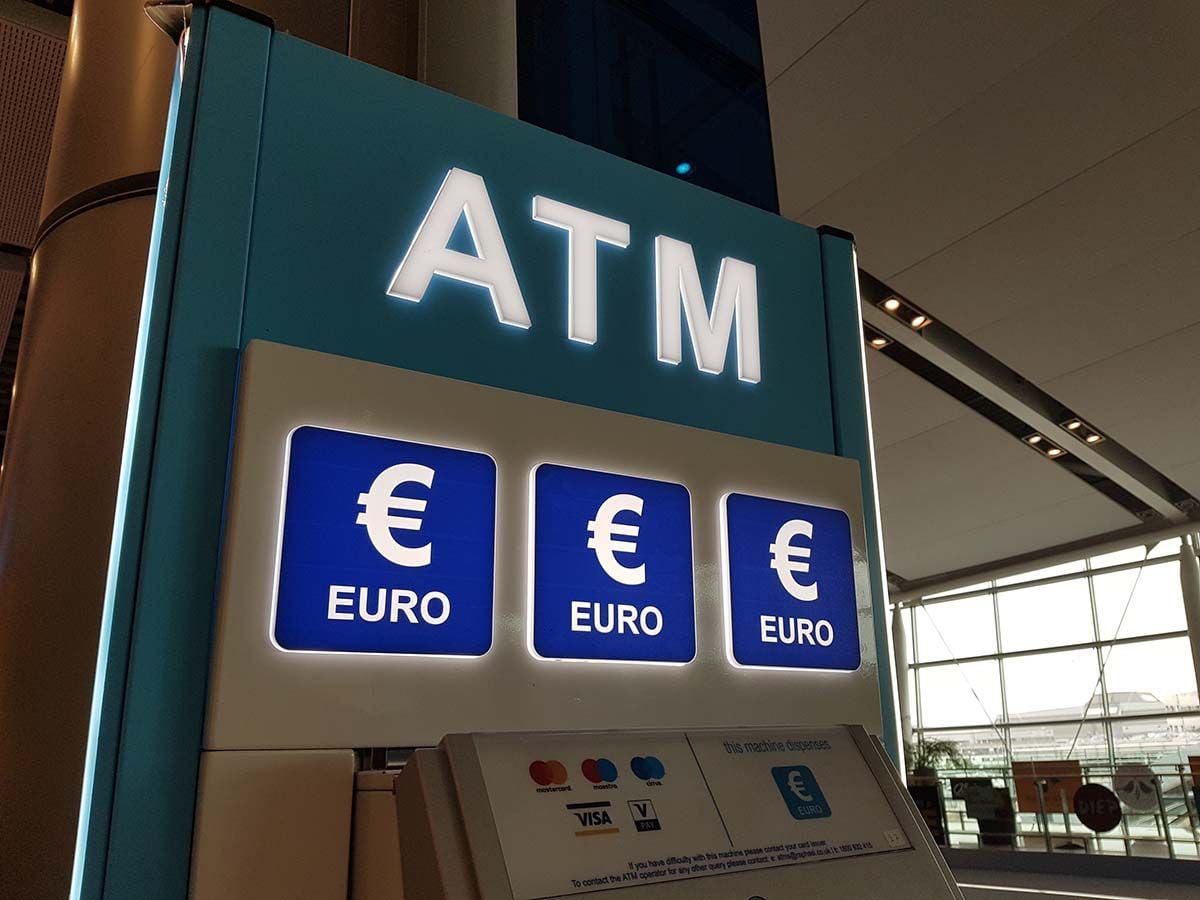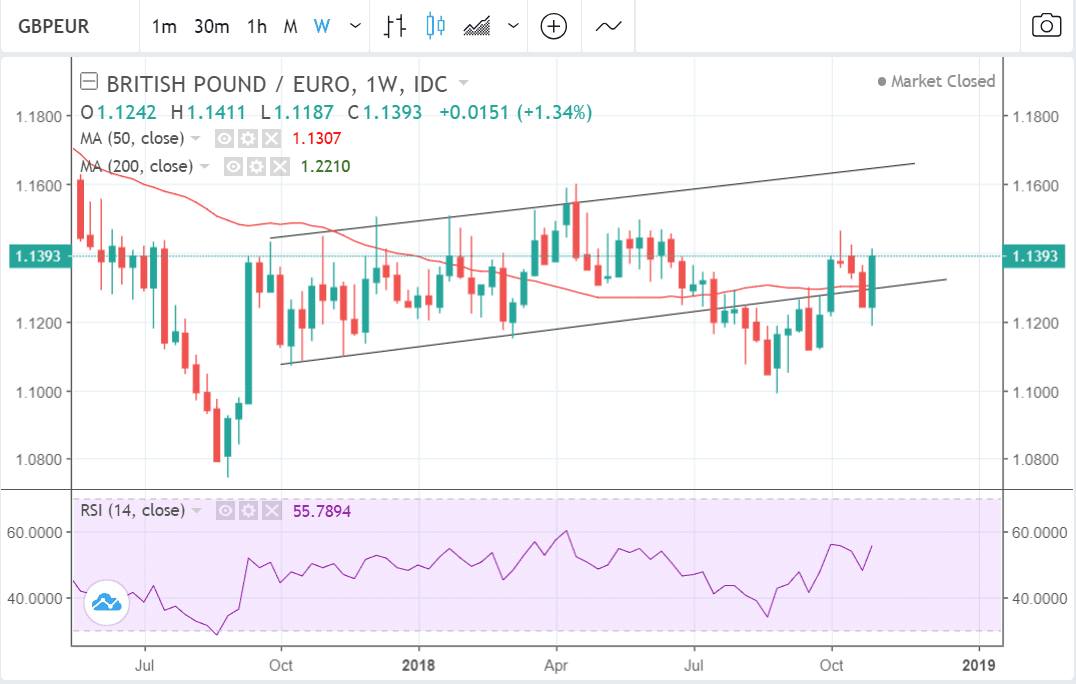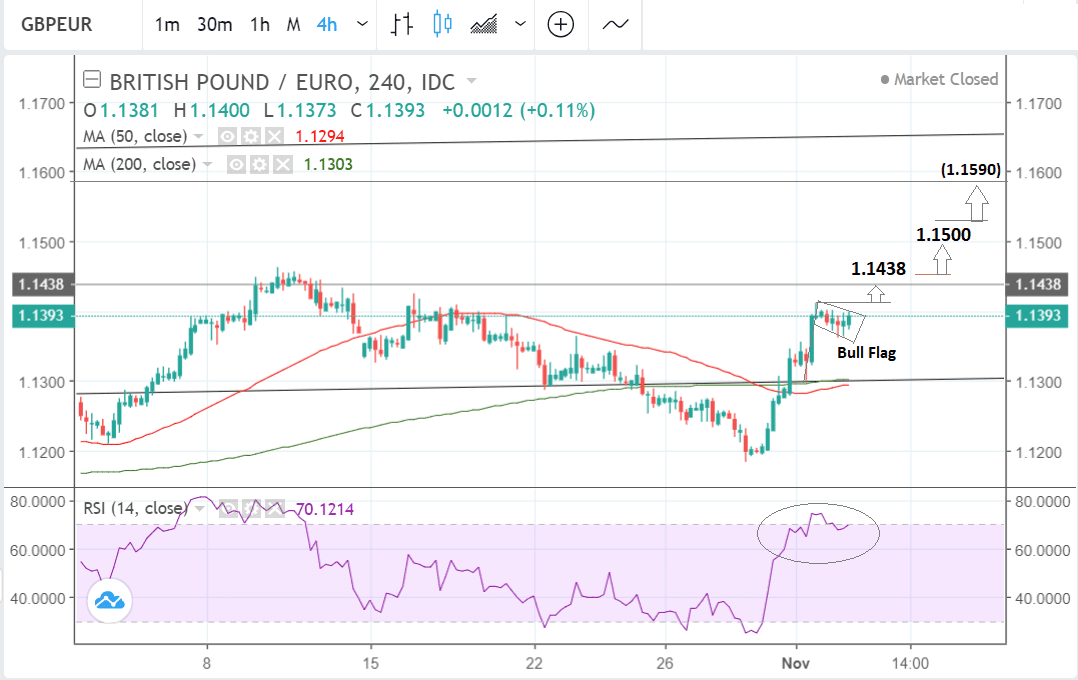Pound-to-Euro Conversion in the Week Ahead: Upside Bias

Image © Pound Sterling Live
- Pound Sterling back inside long-term range vs. Euro
- The charts suggest a mild upside bias
- But we remain wary of shift in Brexit sentiment
- The main release for Sterling is GDP; for the Euro retail sales
Pound Sterling is firmer against the Euro at the start of the new week having enjoyed a sudden surge back towards just below 1.1450 in Asian trade on headlines confirming progress forward in Brexit negotiations continues.
However, the advance has pared back somewhat and the Pound-to-Euro exchange rate is quoted at 1.1426 at the time of writing.
Recent rises put the conversion back inside a longer-term rising channel, located between 1.1300 and 1.1650 having shifted lower out of the range on growing 'no deal' fears during late summer.
While in the tunnel we suggest the longer-term recovery trend is intact.
Despite trading in volatile swings we see a bias to more upside in the week ahead as the U.K. and E.U. make further compromises towards agreeing on a Brexit deal.
The 4hr chart below shows the pair has formed a bull flag after rising up from the late-October 1.12 lows.
The 'flag' pattern is likely to break higher and continue the short-term uptrend. A break above the 1.1411 highs would provide confirmation of a move higher to the next target at the R1 monthly pivot at 1.1438.
Whilst R1 may produce some temporary resistance to further gains the bullish trend is forecast to extend eventually, and a move above 1.1450 would confirm an extension up to the next set of targets at 1.1500 and 1.1590.
The RSI indicator has entered the overbought zone (circled) suggesting the pair may be overdue a period of sideways or corrective activity which corroborates the thesis R1 present an obstacle.
Monthly pivots are used by technical traders to fade the dominant trend in anticipation of a pull-back. They are also used as short-hand to access overbought and oversold levels.
Advertisement
Bank-beating GBP-EUR exchange rates: Get up to 5% more foreign exchange by using a specialist provider to get closer to the real market rate and avoid the gaping spreads charged by your bank when providing currency. Learn more here
The Pound: What to Watch this Week
For Sterling, Brexit remains central to the outlook with the swinging in sentiment on whether or not a deal will be agreed by year-end being the main driver of the currency.
"Headlines on Brexit will intensify, but short of a material sign that negotiations are progressing (or that we are heading towards a ‘no deal’), they are unlikely to trigger a decisive directional shift in Sterling," says Daniel Been, Head of FX Research with ANZ Bank.
Data releases have however moved Sterling over recent days, but the moves tend to be short-lived in nature and therefore tend to be faded.
Nevertheless, there are some important numbers to watch.
Services PMI for October is another important release for the Pound in the week ahead. It is released on Monday at 9.30. It is forecast to slow to 53.3 from 53.9 previously.
The PMI numbers already released this week have been mixed with manufacturing PMI released Thursday disappointing while construction on Friday beat expectations.
The key release for the Pound in the week ahead is GDP data, out on Friday, November 9 at 9.30 GMT.
Month-on-month GDP is forecast to have only grown 0.1% while third quarter GDP is forecast to show a 1.5% rise on an annualised basis (1.2% previously) and a 0.6% rise on a quarterly basis (quarter-on-quarter) compared to 0.4% previously.
If growth accelerates as much as expected it may boost the Pound - if it beats expectations it could rise even more strongly.
Industrial and manufacturing production for October are out on Friday at 9.30 and forecast to show -0.1% and 0.1% changes in October on a monthly basis. While the data will be important we feel that from a Sterling perspective it will be overshadowed by the more timely monthly statistic.
Also on Friday are trade data with the balance forecast to reveal a deficit of £11.40BN in September.
Apart from this, there are also several housing metrics out including Halifax house prices at 8.30 on Wednesday and the RICS house price balance at 0.01 on Thursday.
The British Retail Consortium's retail sales monitor is often a good leading indicator for retail sales in general and it is forecast to show a 0.6% rise in October when released at 0.01 on Tuesday.
Euro: What to Watch
While there is no major data release out of the Eurozone scheduled for the coming week, what data there is will be scrutinised more than usual owing to worrying signs of slowdown in the Eurozone economy.
We have seen data disappoint over recent weeks and markets have been wondering whether or not it is prudent for the European Central Bank (ECB) to reduced it stimulatory support to the economy.
Expectations for the ending of the support tend to prompt a stronger Euro, but expectations for any delay in the ECB's withdrawal of stimulus tend to weigh on the currency.
"While the ECB is set to end QE this year, persistent soft inflation undermines its (and investors’) confidence in the scope for eventual rate rises. Further, while activity data continues to deteriorate we see scope for more sustained weakness in the EUR over the medium term," says ANZ Head of FX Research Daniel Been.
The main release for the Eurozone is probably retail sales in September, out at 10.00 GMT on Wednesday, which is forecast to show a 0.1% rise on a monthly basis.
The ECB's latest economic assessment is out on 09.00 G.M.T on Thursday, and may well be closely scrutinised by traders looking for hints about whether the central bank is having doubts about removing stimulus in 2019, due to slower growth.
If the ECB is having doubts the Euro could see a quite rapid sell-off.
The October PMI data out on Monday are revisions so unless they differ markedly from the first estimates are unlikely to change the currency.
Advertisement
Bank-beating GBP-EUR exchange rates: Get up to 5% more foreign exchange by using a specialist provider to get closer to the real market rate and avoid the gaping spreads charged by your bank when providing currency. Learn more here






